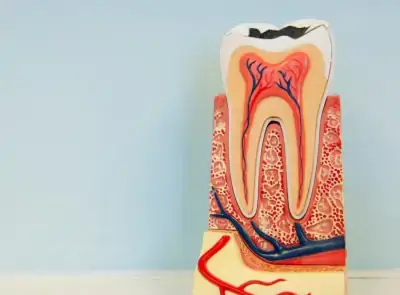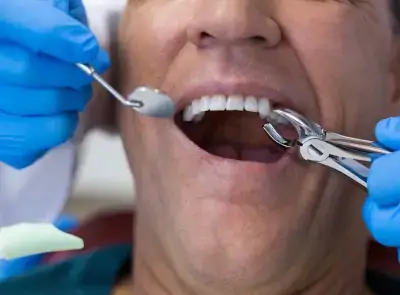We Provide
Full Dental Care
Best Dentist in gurgaon
Kreative Dental & Implant Centre

Kreative Dentistry welcomes you with your queries and dental problems. I believe in offering you the best Toothcare and Dental Implant treatments in Gurgaon that give you your best smile at an affordable price. Kreative dentistry has a team of Best Dental Clinic in Gurgaon. We believe in giving excellence with lifelong satisfaction and a forever bond which made us connected to families and our nearby communities.
- Invisible Braces
- Teeth whitening
- Depigmentation
- Teeth Whitening
- Tooth Filling
Have an emergency?
Book your dentist near you.
Dr. ( Major ) Chander Prakesh
Memberships And Association



Team of Great Skilled Cosmetic Best Dentist In Gurgaon.
In Our Maxillofacial Surgery & Treatment

Also known as ENDODONTIC TREATMENT. Easy, painless treatment for saving your natural tooth against inflation.

Dental filling is a form of treatment to repair a broken tooth structure that may have been caused by decay or trauma.

Dental bridges are used to bridge the space between missing teeth. Natural teeth or implants on both sides.

Do you hesitate to smile ?
Sometimes drinking too much coffee, tea, or smoking can change the color…

Your Gums lightened up with the latest cosmetic dentistry technique. We assure you to get a beautiful smile for life.

Wisdom teeth are the third set of molars in your mouth and are recommended to be removed.

Transparent braces made up of special material that is used to straighten teeth just like braces.

A dental implant is used to support one or more false teeth. It is a titanium screw that can replace the root of a tooth…
Best Dentist In Gurgaon.
Treatments and Emergency conditions
We specialize in a wide array of dental fields and have some of the best facilities.
The best implant dental clinic in Gurgaon also provides comfortable treatment teeth of patients plus their safety. Kreative Dental Implant and Centre A multi-specialist dental clinic is always ready to make your smile better.
Kreative Dentistry aims to offer the best-in-class offer for your teeth.
Checkups
Broken Tooth
Critical Tooth Care
Broken Jaw
Tooth Extraction
Toothache
Tooth Decay

Kreative Dentist near you
Our Team Of Dental Specialists
What People Says
Satisfied Patients
Frequently
Asked Questions
Our tongue, mouth and teeth contain different types of bacteria Some bacteria are helpful, but some decay your teeth because they need sugar to create an acid that makes cavities with time and hence is the cause of tooth decay.
Factors that may increase the risk of Cavity formation in a tooth are:
- Poor Brushing habits
- High crab food
- Dry mouth
- Absence of fluoride in toothpaste.
Everyone should be very cautious about eating patterns throughout the day If children are drinking too many juices and sugar beverages. this will impact their tooth and weight.
Parents should provoke their children to eat more fruits and vegetables in their meals.
Everyone should adopt structured solid meals and snacking patterns instead of taking 100 percent juices and beverages all day.
If you still see any white scar that is a sign of loss of minerals in the tooth or any hole in your teeth. please message us. We will suggest the best cost-effective dental service along with the right choice of food for your teeth.
Painful sores like canker sores may interfere with your eating and appear on the inside of the lips, gums. tongue. roof of the mouth. or throat. They are usually harmless and heal on their
own after a few weeks.
Recurring sores may indicate other diseases like celiac disease. Vitamin deficiency, or other diseases. It may cause blisters too.
If the sores are:-
- Half n inch more massive than the standard size
- Rash
- Frequently ocurring
- Joint pain
- Diarrhoea
kindly see your dentist as soon as possible
- Use a soft fiber brush to clean your teeth.
- Clean your teeth in a circular motion.
- Replace your toothbrush every 3 months.
- Use a tongue scraper to clean your tongue.
- Use a Dental Flosser to clean leftover food in your side teeth.
- Rinse after tooth floss.
Tooth Enamel. a hard white coating holding your tooth, is very likely to affect when not cared for properly. Dental plaque may develop in the form of a thin film around the teeth. The bacteria release acid around that area. which may cause cavities. Brushing your teeth twice a day may prohibit the formation of plaque But if the cavities are formed, it is advisable to visit a doctor to fill up the cavities. It is also recommended to use fluoride gel at home, as suggested by the doctor.
Many people ask these questions.
- Is Dental Implant painful?
- Is Dental implant Safe?
The success rate of Dental Implant is 97% for 10 years. In this process. at first a proper plan is made on the basis of your bone density and alignment. Dental implants are a good option for keeping your health and wellness. It will make your adjacent teeth less sensitive In dental implants a titanium socket is placed in the root and left to rest for 6 to 12 weeks in which the jawbone grows around the metal post. Then the artificial tooth is fixed on that socket.
Get the best dental implant experience in India at Kreative Dental and Implant centre.
Talk to our doctor if are in doubt or fear about the treatment.
Sector 50 Clinic
Unit no. 411, 4th floor, Good earth shopping centre, Sector 50, Gurugram – 122018
Haryana



